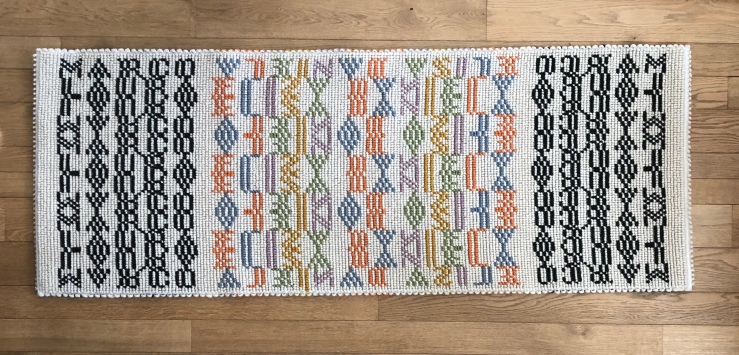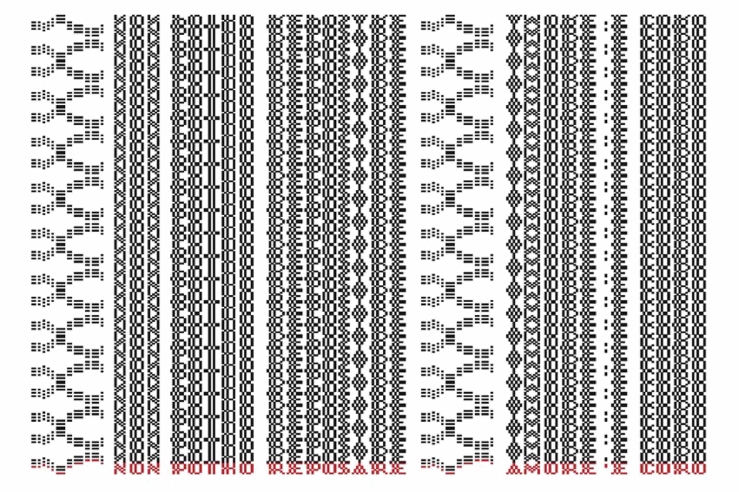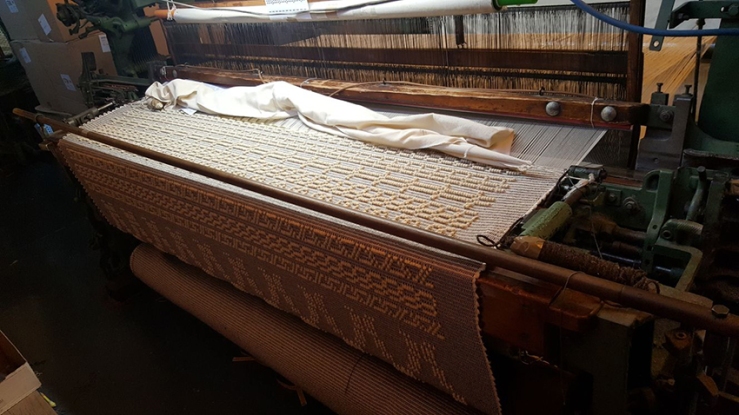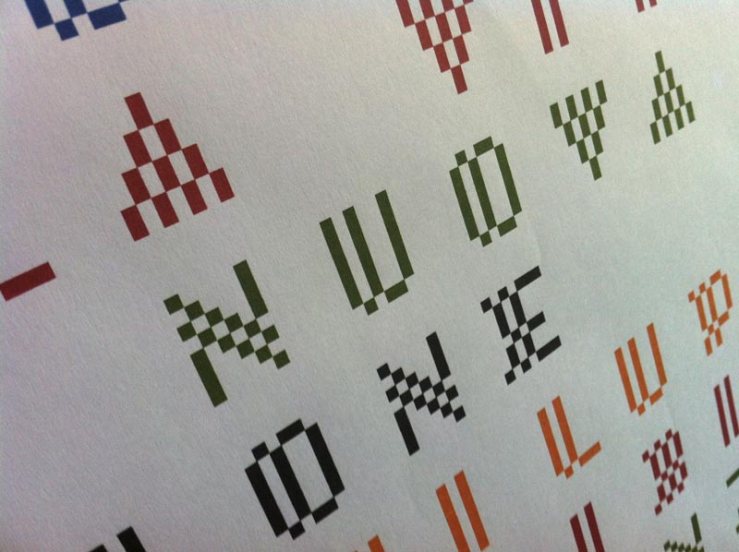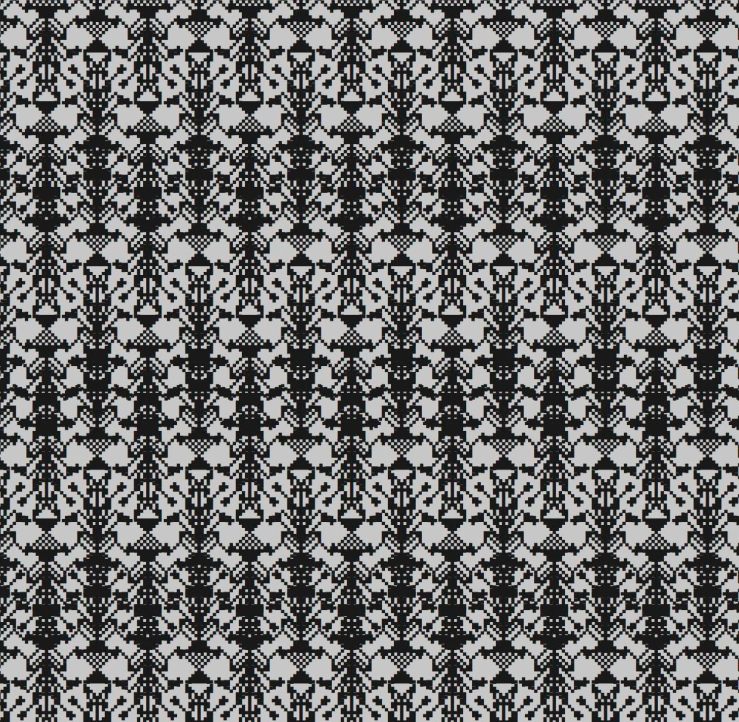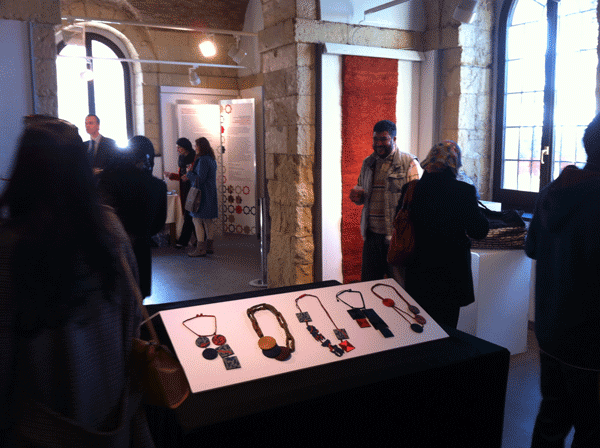Here it is, finally: my first typographic rugs. It is the completion of a research work of years, as evidenced by the pages of this site. The experimental test, the proptotype. I have baptized them with “Tavoletti” because they have something to pay to Eugenio Tavolara and Alighiero Boetti (and because of the sardinian term “tauleddas”, tavolette in italian, which designates the small Sardinian tapestries). They maintain the geometric rigor, the recursive counterpoint typical of the Sardinian textile tradition, but add to the typographical element, which introduces a further level of reading, surprise and customization. They are the product of an algebra in which element matrices are subjected to inversion, rotation, symmetry, overlay, etc. to form the ornament. A graphic that can be used in its serial abstraction and, at the same time, a typography that can be read and understood.
They were made by Maria Antonia Urru for two couples, Luisella and Michele, Riccardo and Annalisa (highlighted in yellow and magenta in the third picture), to whom they were given by my friend architect Marco Tradori, who commissioned me. In the first one, Luisella / Michele, the composition is perfectly symmetrical, on two orthogonal axes. In the second, Annalisa / Riccardo, there is also an overlapping of the two names, which generates new geometric motifs. For the moment they are almost monochromatic, but the next (which will be realized shortly) will play with colors and size scale.
[ Eccoli, finalmente: i miei primi tappeti tipografici. È il coronamento di un lavoro di ricerca di anni, testimoniato dalle pagine di questo sito. Il prototipo e l’evidenza sperimentale. Li ho battezzati Tavoletti, perché devono qualcosa sia a Eugenio Tavolara che ad Alighiero Boetti (e per assonanza con il termine “tauleddas”, tavolette, che designa i piccoli arazzi sardi). Mantengono il rigore geometrico, il contrappunto ricorsivo tipico della tradizione tessile della Sardegna, ma aggiungono l’elemento tipografico, che introduce un ulteriore livello di lettura, sorpresa e personalizzazione. Sono il prodotto di un’algebra in cui le matrici degli elementi vengono sottoposte a processi di inversione, rotazione, simmetria, sovrapposizione, etc. che vanno a formare l’ornamento. Una grafica fruibile nella sua astrazione seriale e, allo stesso tempo, una tipografia che può essere compresa e letta.
Sono stati realizzati da Maria Antonia Urru per due coppie, Luisella e Michele (evidenziati nella terza immagine), Riccardo e Annalisa, a cui sono stati regalati dall’amico architetto Marco Tradori, che me li ha commissionati. Nel primo la composizione è perfettamente simmetrica, su due assi. Nella seconda c’è anche una fascia di sovrapposizione dei due nomi, che genera nuovi motivi geometrici. Per il momento sono quasi monocromatici, ma i prossimi (che verranno realizzati a breve) giocheranno con i colori e con i passaggi di scala. ]






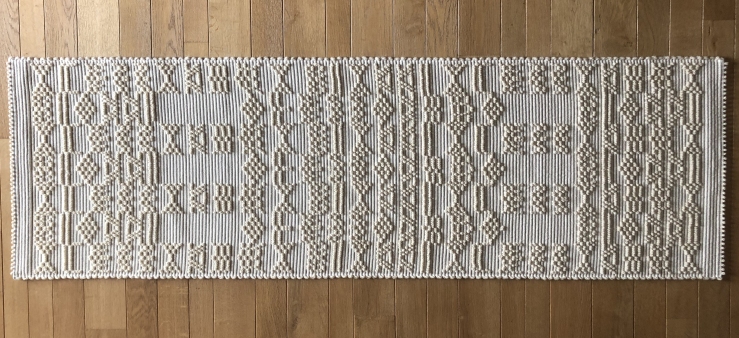 Here are three new projects for my typographic carpets. One, monochrome, was created, as always by Mariantonia Urru, for Gianni and Alessandra. The second was composed in two different versions, one monochromatic and the other in color, for a family composed of Marco and Laura, the parents, and Daniela and Elisa, their daughters. The larger version is a family rug, divided into three equal bands. I would like that, when Elisa and Daniela will fly from the nest, the carpet can be divided into three narrower bands (although perhaps it could be technically complex), each of which brings with it however all the information of the family, like a DNA.
Here are three new projects for my typographic carpets. One, monochrome, was created, as always by Mariantonia Urru, for Gianni and Alessandra. The second was composed in two different versions, one monochromatic and the other in color, for a family composed of Marco and Laura, the parents, and Daniela and Elisa, their daughters. The larger version is a family rug, divided into three equal bands. I would like that, when Elisa and Daniela will fly from the nest, the carpet can be divided into three narrower bands (although perhaps it could be technically complex), each of which brings with it however all the information of the family, like a DNA.
